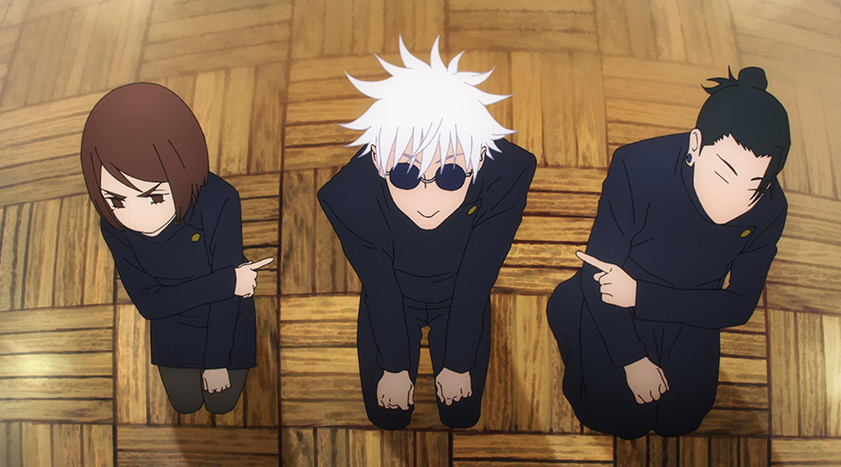Circling back to the first topic I discussed on this blog, I decided it would be interesting to expand upon the idea of translating stories and how that changes the readers’ perception of the characters and their actions. This time, instead of focusing on one character, a comparison will be made between the way different characters present themselves and how that mirrors their personality, with the focal point being Japanese honorifics. Once again, this post was inspired by the TikTok videos from @papikaychan.
What are honorifics?
Honorific speech—keishō (敬称)—is a system of prefixes and suffixes used to refer to someone in a conversation. The suffixes (used most frequently with the last name) can be specific to gender, age, and status and they reflect the speaker’s relationship to or position relative to the addresee1. The suffixes most relevant to the current discussion include:
- –san (さん) — used between people equal in age, shows respect
- –kun (君【くん】) — used by people senior in status for their juniors or to refer to men in general
- –senpai (先輩、せんぱい) — used for older colleagues or students
- –sensei (先生、せんせい) — used for teachers or experts from a particular field
Honorific speech may be dropped to plain (casual) speech when talking to close family, friends, or children—it indicates a very close relationship. As opposed to the Western tradition, it is more common to address people by their last name instead of the given name. Using the latter indicates a level of intimacy reserved for lovers or, in the younger generations, very close friends.
Due to the nature of most anime and their aim to immerse the viewer in the story, conversations usually involve the use of casual speech—between friends, family members, or people of similar status, which does not fully mirror authentic, daily-life Japanese interactions2. When it comes to translation, it is difficult to reflect the dynamics created with the use of certain honorifics in English, a language in which such a detailed distinction is not possible. ‘Miss’, ‘Mr’, or ‘Mrs’ are sometimes used, but they do not carry the same weight as their Japanese counterparts.
Honorific use in Jujutsu Kaisen
A lot of information can be inferred about a character based on their use of honorifics. Not only do they immediately establish the dynamics between characters, but they also show the way a character wants to be perceived. To illustrate this, I will focus on the first half of Episode 1, Season 2 of Jujutsu Kaisen—in this episode, we get reintroduced to some characters through a glimpse of their highschool days, namely Gojo, Geto, and Shoko, but additionally Mei Mei and Utahime.

Instead of going through the episode in great detail, I will summarise the way each character present addresses the others and highlight the differences.
Utahime Iori, a Second-grade sorcerer, is on a mission at a haunted mansion with Mei Mei, a First-grade sorcerer and her senior in status. This is indicated by their ways of addressing each other—Mei-san shows Utahime’s respect for the other woman and her status relative to Utahime. Utahime refers to the second-year Jujutsu High students by their family name, Gojo, or given name, Shoko, implying she her senior status or age and perhaps a more friendly relationship with Shoko. She comes off as respectful and polite.
Mei Mei, the First-grade sorcerer, seems to be the oldest and of the highest status from the discussed characters. Referred to as Mei-san by both Utahime and Gojo, she, in turn, addresses Utahime by her family name and Geto as Geto-kun.
Satoru Gojo, a second-year high school student, has a specific way of using honorifics. Namely, he does not use them at all for Utahime, but he does address Mei Mei as Mei-san, highlighting his respect for the latter and his apparent lack thereof for the former (Utahime scolds him, “Be more polite!”, referring to keigo, respectful language). This is in line with his arrogant use of ‘ore’, the less polite masculine pronoun, and his personal philosophy of respecting the strong. He calls his peers by their given names, Suguru and Shoko, which gives us a glimpse of their close friendship.
Another two honorifics not previously discussed yet are -senpai, which Shoko uses to refer to Utahime since the Second-grade sorcerer is older than her, and -sensei, which all the students use to refer to their teacher, Yaga.

When understanding the nuance of the various honorifics, it is easier to pick up on the dynamics between different characters. Unfortunately, apart from ‘sensei’, none of the other suffixes are reflected in the English dubbing, which, without more context, can make the relationships between the characters harder to grasp. This linguistic difference is hard to work around, but even some basic knowledge of Japanese broadens the understanding of the story immensely!
- Brenner, R. E. (2007). Understanding Manga and Anime. Westport, Connecticut: Libraries United, 2007. [Accessed 21 October, 2023]. ↩︎
- Chan, Y. H., & Wong, N. L. (2017). Learning Japanese through anime. Journal of Language Teaching and Research, 8(3), 485. [Accessed 22 October, 2023] ↩︎


Recent Comments